Description of business
Waterworks technologies
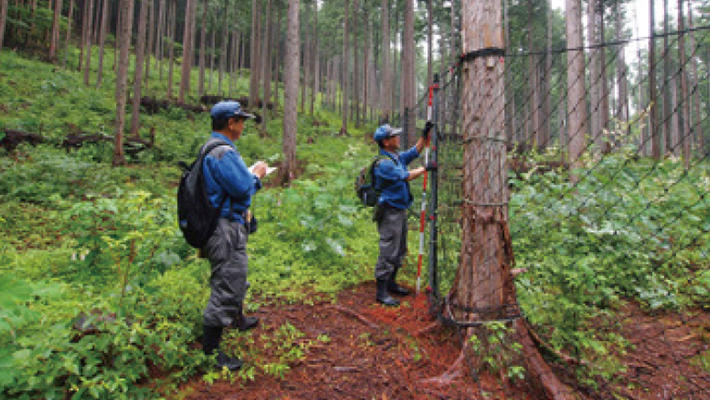
Inspection of intrusion prevention nets for deer and other intruders
The Tokyo Metropolitan Government Bureau of Waterworks owns water conservation forests that extend from Koshu City (Yamanashi Prefecture), which is located along the upper reaches of the Tama River, to Okutama-machi(Nishitama District, Tokyo). These forests stretch approximately 31 km east to west and approximately 20 km north to south, covering a vast area of about 24,000 ha (as of March 2018) (equivalent to about one third of the total area of the 23 wards of Tokyo).
We undertake status surveys and conduct maintenance for these water conservation forests.

Screen unclogging
Water resource facilities such as dams and reservoirs help to adjust the flow rate of rivers according to seasonal changes in precipitation and fluctuations in the water supply demand by storing rainwater and snow meltwater.
The Murayama Reservoir and the Yamaguchi Reservoir source their water from the Tama River. Raw water collected from the OzakuIntake Weir and the Hamura Intake Weir is transferred through the Tamagawa Waterworks to be stored in these reservoirs, from which water is conveyed to the Higashi-Murayama Purification Plant and the Sakai Purification Plant.
We are entrusted by the Tokyo Metropolitan Government Bureau of Waterworks to manage the Hamura Intake Weir, the Tamagawa Waterworks, the Murayama Reservoir, and the Yamaguchi Reservoir.

Monitoring of the operation of purification facilities
We monitor different water treatment processes, such as advanced water purification, quick filtration, and membrane filtration, and undertake maintenance of facilities situated inside each of the purification plants to ensure a reliable supply of water that is safe and tasty.

Inspection of facilities
We conduct inspections of electrical equipment, pump equipment, and other such machinery, carry out minor repairs, respond in the event of abnormalities, and perform various other activities at water supplying stations, booster pump stations, and the like to ensure a reliable supply of water that is safe and tasty.
Operation and maintenance of purification plants and the like using a concentrated management method designed for wide-area supply
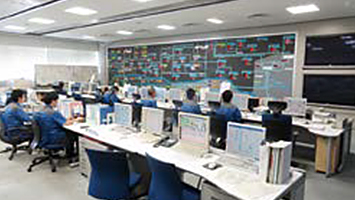
The Tama District of Tokyo has a vast water service area that covers 26 municipalities, with about 600 waterworks facilities (e.g., purification plants, water supplying and distribution stations, pump stations, and water source wells) scattered throughout the area. These facilities are divided into four areas (Northern Tama, Western Tama, Southern Tama East, and Southern Tama West) to facilitate concentrated management.We undertake around-the-clock operational management of these facilities.

Investigation of functions for trunk distribution pipes
We conduct research supervision by taking advantage of the abundant experience and specialized technologies that we have developed over many years to clarify the present condition of the relevant water distribution facilities (distribution pipes and attached equipment, such as valves) to ensure, among other things, that the facilities can perform their functions at all times. We then evaluate the research results from many different perspectives to make specific facility improvement proposals.
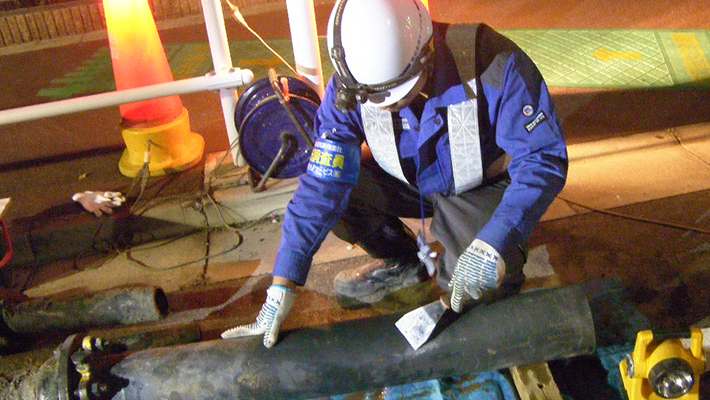
Investigation of corrosion for excavated pipes
We conduct research into the corrosion conditions of the inside and outside of pipes, soil surveys, soil analysis, and other such activities to identify how distribution pipes are buried. We use the research results to conduct a quantitative and statistical analysis of these corrosion conditions and the contributing factors and then create data (e.g., distribution pipe service life predictions) that allows us to judge whether the pipes need to be replaced.
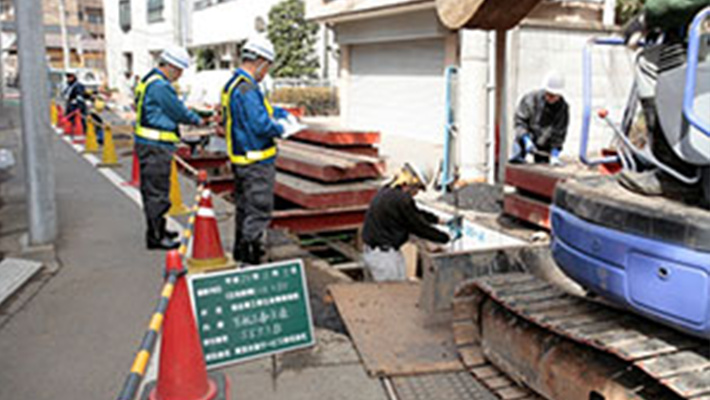
On-site construction supervision for other companies
We are entrusted by the Tokyo Metropolitan Government Bureau of Waterworks to conduct on-site construction supervision to ensure that any construction work carried out by other companies for the maintenance of water pipe facilities and the like will not cause any damage to these facilities.
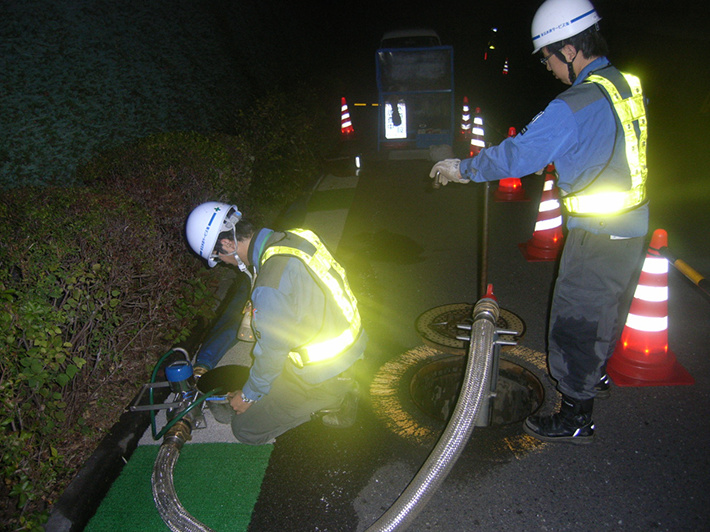
Washing through water drainage
Foreign matter, such as rust, inside distribution pipes may cause water turbidity and water quality deterioration.
Given this, we wash pipes by performing systematic drainage.
This method offers an effective means of removing foreign matter (e.g., deteriorated seal coating) that has adhered to the inside of the distribution pipes.
A cleaning head is inserted from the fire hydrant T-tube, without any need for excavation or pipe-cutting, to remove foreign matter that has adhered to or accumulated on the inside of a distribution pipe. If foreign matter cannot be removed from the inside of the pipes by drainage washing, this method is an effective alternative as it allows the pipes to be cleaned by jet-spraying high-pressure water from the cleaning head and using a rapidly rotating brush.
Advantages
*This method has been jointly developed by the Tokyo Metropolitan Government Bureau of Waterworks, TSS Tokyo Water Co., Ltd. and Kubota Corporation.

Appearance of the cleaning head (φ150)

Hydraulic and water quality surveys inside distribution pipes
We install measuring instruments on fire hydrants and air valves to conduct hydraulic and water quality measurements continuously with the aim of accurately ascertaining the water distribution status and ensuring a reliable supply of water that is safe and tasty.
We carry out these surveys to meet the needs of water suppliers (e.g., the need to eliminate stagnant water and determine the flow rates, directions, etc., before and after system changes) and make proposals accordingly.
A new type of sensor that offers unprecedented compactness and energy-saving performance! Not only that, it is smaller (approx. 45%–60%) and provides more efficient electric power consumption (approx. 75%) than conventional models! Using fire hydrants and air valves, this sensor can simultaneously measure and record six different types of hydraulic and water quality data.
Installing multiple sensor units enables you to analyze various types of hydraulic and water quality information, such as the water flow conditions and water quality changes within a specific section of the water distribution network. The results can then be used to create basic information materials for distribution network analysis, measure the effectiveness of maintenance operations, and so on.
Advantages
*This product has been jointly developed by TSS Tokyo Water Co., Ltd. and Hitachi High-Tech Solutions Corporation.

This device measures the water pipe pressure by using equipment attached to the distribution pipes.
It simplifies the measurement and recording of water pressure by utilizing existing equipment (e.g., fire hydrants) attached to the distribution pipes. With this attached equipment and a little bit of space, the water pressure can be measured anywhere. By measuring the water pressure at different locations, you can use this product to streamline maintenance operations and promote more appropriate water supply management through pressure control.
Advantages
*This product has been jointly developed by TSS Tokyo Water Co., Ltd. and Hitachi High-Tech Solutions Corporation.

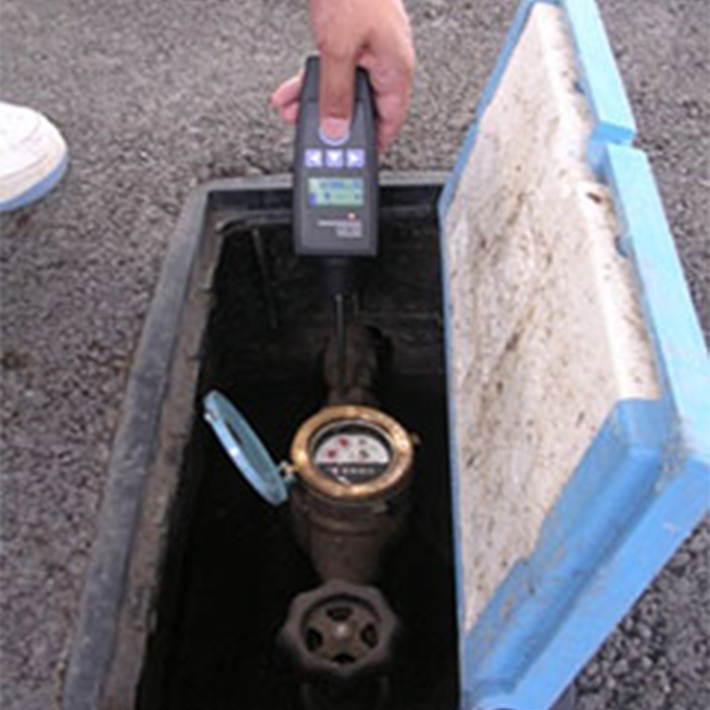
Leak detection using the TS Leak Checker
Most leakages tend to be subsurface ones, which are often detected long after they first occur. The Tokyo Metropolitan Government Bureau of Waterworks has been implementing measures such as the following to reduce subsurface leakages: (1) improving the material used for service pipes by adopting stainless steel pipes; (2) building an effective distribution pipe network; and (3) maintaining appropriate water pressure through meticulous distribution pump operations. Consequently, the leaked water volume has decreased to approximately 3% of the total distribution amount, which is one of the lowest values in the world.
We carry out leak detection operations by using theTS Leak Checker (a time integration-type leak detector) and other leak detectors, such as electronic and correlation detection equipment.

Leak detection using electronic leak detection equipment

Leak detection using correlation leak detection equipment

Leakage volume measurement
We take measurements from service pipes, water meters, and other such equipment and detect the sound of water leaking in their proximity. When it is used to take measurements for service pipes, water meters, and other such equipment, the TS Leak Checker distinguishes between the continuous vibration sound associated with leaking water and other transient noise through time integration to judge whether any water leakages are present in the surrounding area.
This device is easy to operate and can be used to take water meter readings at the same time, thereby reducing the costs involved in conducting leak detection work.
Advantages

TS Leak Checker
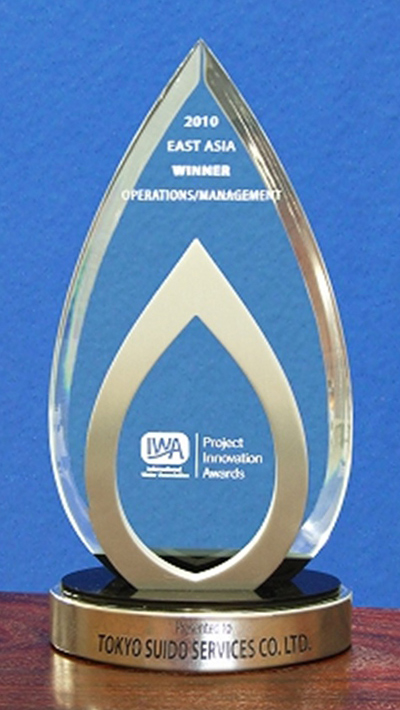
This device won the IWA-PIA2010 East Asia Grand Award in the Operation/Management category.
The International Water Association (IWA) presents its Project Innovation Awards (PIA) to recognize and commend excellence and innovation in water-related engineering projects.
When we entered the PIA in 2010, we won the East Asia Grand Award in the Operation/Management category for our leakage prevention technology using the TS Leak Checker, the product described below.
*The TS Leak Checker (SV1108A), the stick-type TS Leak Checker (SV1109), and the new-version TS Leak Checker (SV1110) have been jointly developed by TSS Tokyo Water Co., Ltd. and Nihon Water Solution Co., Ltd.
*The version of the TS Leak Checker that is equipped with a meter reading function (SV2000) has been jointly developed by TSS Tokyo Water Co., Ltd., Toshiba Infrastructure Systems & Solutions Corporation, and Nihon Water Solution Co., Ltd.
PageTop